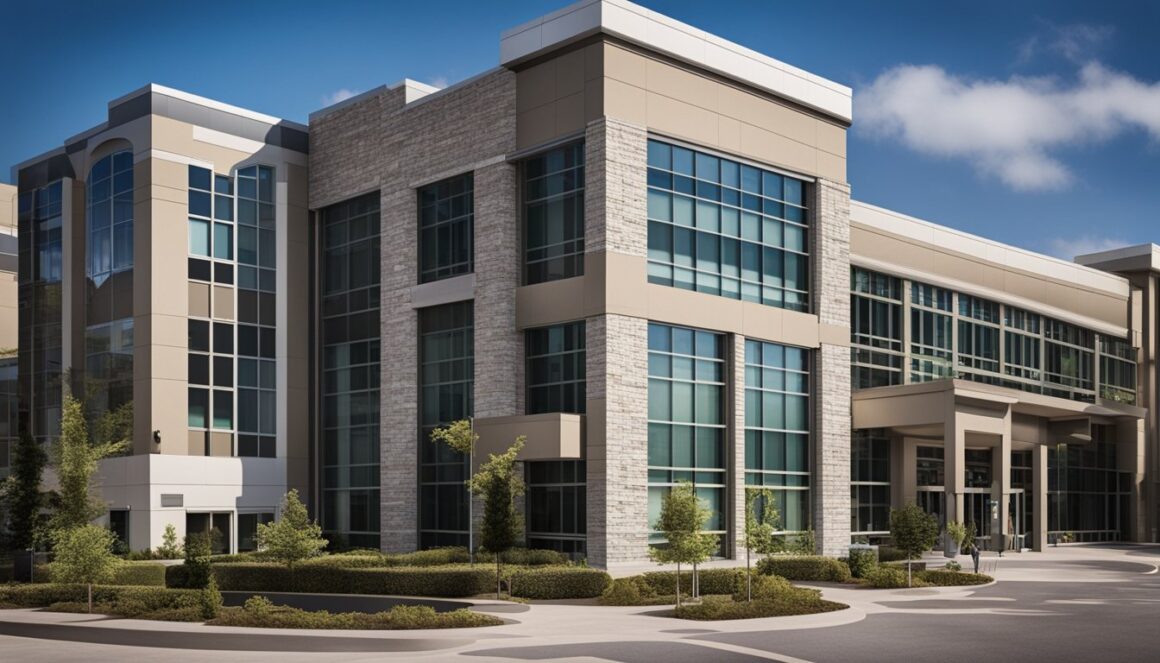Interest rates play a crucial role in the real estate industry. They affect the cost of borrowing money, which in turn, impacts the value of real estate investments. This is especially true for multifamily properties, which are residential buildings with more than one unit. Understanding the impact of interest rates on multifamily property investments is essential for real estate investors looking to maximize their returns.
Interest rates can affect the valuation of multifamily properties in several ways. When interest rates rise, the cost of borrowing money increases, which can lead to higher mortgage rates and lower property valuations. On the other hand, when interest rates fall, the cost of borrowing money decreases, which can lead to lower mortgage rates and higher property valuations. Real estate investors need to be aware of these fluctuations in interest rates and how they can impact the value of their multifamily property investments.
Financing multifamily properties can also be affected by interest rate trends. Higher interest rates can make it more difficult to obtain financing for multifamily properties, while lower interest rates can make it easier. Real estate investors need to have a solid understanding of the financing options available to them and how interest rates can impact their ability to secure financing. By staying on top of interest rate trends, real estate investors can make informed decisions about financing their multifamily property investments.
Key Takeaways
- Interest rates have a significant impact on multifamily property investments and can affect property valuation and financing options.
- Real estate investors need to be aware of fluctuations in interest rates and how they can impact the value of their multifamily property investments.
- Understanding financing options and how interest rates can impact them is crucial for real estate investors looking to maximize their returns.
Basics of Interest Rates in Real Estate
Interest rates play a significant role in the real estate market, affecting the prices of properties and the demand for them. Understanding how interest rates work is crucial for investors looking to invest in multifamily properties.
When interest rates are low, it becomes easier for investors to finance their purchases, leading to an increase in demand for properties. Conversely, when interest rates are high, investors may find it challenging to finance their purchases, resulting in a decrease in demand for properties.
Interest rates also impact the value of properties. As interest rates increase, the value of properties decreases, and vice versa. This is because higher interest rates lead to higher borrowing costs, which in turn leads to lower cash flows and lower property valuations.
Additionally, interest rates impact the overall economy, which can indirectly affect the real estate market. For example, when interest rates increase, consumers may have less disposable income, leading to a decrease in demand for properties.
Overall, interest rates play a crucial role in the real estate market and are an essential factor that investors must consider when making investment decisions.
Interest Rates and Multifamily Property Valuation

Interest rates have a significant impact on the valuation of multifamily properties. In this section, we will explore the ways in which interest rates affect the valuation of multifamily properties.
Cap Rate Influence
The capitalization rate, or cap rate, is a crucial metric used to value multifamily properties. It is the ratio of the property’s net operating income (NOI) to its market value. As interest rates rise, cap rates typically increase as well. This is because higher interest rates mean higher borrowing costs, which can reduce the amount of money available for a property’s NOI. As a result, investors may require a higher cap rate to compensate for the increased risk of investing in a property with a lower NOI.
Here is a numerical example of how interest rates affect cap rates in multifamily financing:
Example Scenario:
- Property Details:
- Updated Property Value: $10,000,000
- Updated Net Operating Income (NOI): Assume it’s proportionally increased, say $700,000 per year (maintaining the same percentage as the original example)
- Initial Situation:
- Interest Rate: 4%
- NOI: $700,000
- Property Value: $10,000,000
- Cap Rate = NOI / Property Value = $700,000 / $10,000,000 = 7%
- Interest Rate Increase:
- New Interest Rate: 6%
- Assuming NOI remains the same ($700,000), but the property value changes due to the higher interest rate.
- How Cap Rate Changes:
- As before, let’s assume the cap rate increases to 9% due to the market adjustment.
- New Property Value Calculation:
- To maintain a 9% cap rate with the same NOI, the property value would have to adjust.
- New Property Value = NOI / New Cap Rate = $700,000 / 9% ≈ $7,777,778
Explanation:
- The original property value was $10,000,000 at a 7% cap rate.
- With the interest rate hike to 6%, the cap rate the market demands increases to 9%.
- To achieve this 9% cap rate with the same NOI, the property value decreases to approximately $7,777,778.
- Therefore, we can see the clear impact that interest rate movements have on multifamily property values.
Debt Service Coverage Ratio (DSCR)
The debt service coverage ratio (DSCR) is another key metric used to evaluate multifamily properties. It measures the property’s ability to cover its debt payments with its NOI. As interest rates rise, so do mortgage payments, which can reduce the property’s NOI and, in turn, its DSCR. If the DSCR falls below a certain threshold, lenders may be less willing to provide financing for the property, which can reduce its value.
Let’s work through an example to illustrate how changes in interest rates affect the Debt Service Coverage Ratio (DSCR) for a property valued at $10,000,000.
Example Scenario:
Assumptions:
- Property Value: $10,000,000
- Loan-to-Value Ratio (LTV): Assume 75%
- Loan Amount: 75% of Property Value = 0.75 × $10,000,000 = $7,500,000
- Net Operating Income (NOI): Assuming an NOI of 7% of the property value, which is $700,000 (7% of $10,000,000).
Interest Rate Scenarios:
- Original Interest Rate: 4%
- Increased Interest Rate: 6%
Steps for Calculation:
- Calculate the Monthly Debt Service for Both Interest Rates:
- This is done using the loan amortization formula, considering a 30-year term.
- Calculate the Annual Debt Service:
- Multiply the monthly debt service by 12.
- Calculate DSCR for Both Scenarios:
- DSCR = NOI / Annual Debt Service.
Let’s go through these steps:
Calculations:
- Monthly Debt Service Calculation:
- Formula: [Loan Amount × (Interest Rate / 12)] / [1 – (1 + Interest Rate / 12)^(-Loan Term × 12)]
- This is much easier to obtain by using a mortgage calculator
For the 4% interest rate:
- Monthly Debt Service = [$7,500,000 × (0.04 / 12)] / [1 – (1 + 0.04 / 12)^(-30 × 12)]
- Monthly Debt Service = $35,806
- Annual Debt Service = ($35,806 x 12 months) = $429,673
DSCR Calculation:
- DSCR = NOI / Annual Debt Service.
- DSCR = ($700,000 / $429,673) = 1.63
For the 6% interest rate:
- Monthly Debt Service = [$7,500,000 × (0.06 / 12)] / [1 – (1 + 0.06 / 12)^(-30 × 12)]
- Monthly Debt Service = $44,966
- Annual Debt Service = ($44,966 x 12 months) = $539,595
- DSCR = ($700,000 / 539,595) = 1.30
Explanation
In this example, we can clearly see that the increase in interest rates from 4% to 6% had a severe impact on the amount available to service the mortgage debt. The resulting Debt Service Coverage Ratio went down by approximately 20%.
The fluctuation in interest rates can impact the operations of multifamily properties significantly. Although, in our example scenario, there is still ample money left over to service the debt, this may not always be the case.
Some lenders allow for larger loans at very low DSCR ratio calculations. These lenders could be putting the multifamily loan in jeopardy if interest rates rise or if property revenues decrease.
Discounted Cash Flow Analysis
Discounted cash flow (DCF) analysis is a method used to value multifamily properties based on their expected future cash flows. As interest rates rise, the discount rate used in DCF analysis also increases. This means that future cash flows are worth less today, which can reduce the property’s overall value. As a result, investors may require a higher return on investment to compensate for the increased risk of investing in a property with lower cash flows.
Interest rates have a significant impact on the valuation of multifamily properties. Higher interest rates can lead to higher cap rates, lower DSCRs, and reduced property values according to DCF analysis. Investors need to consider the impact of interest rates when evaluating multifamily property investments.
Financing Multifamily Properties
Financing a multifamily property investment is a complex process that requires careful consideration of various factors, including interest rates. There are several types of loans available for multifamily properties, and each has its own set of advantages and disadvantages. In this section, we will explore the three most common types of loans used to finance multifamily properties: fixed-rate mortgages, variable-rate mortgages, and interest-only loans.

Fixed-Rate Mortgages
A fixed-rate mortgage is a loan in which the interest rate remains the same throughout the life of the loan. This type of loan is ideal for investors who want the stability of a fixed interest rate and predictable monthly payments. Fixed-rate mortgages are typically available in 15, 20, or 30-year terms.
One of the benefits of a fixed-rate mortgage is that it provides a sense of security to investors. They know exactly how much they will need to pay each month, which makes it easier to budget and plan for the future. However, fixed-rate mortgages often come with higher interest rates than variable-rate mortgages, which can make them more expensive over the life of the loan.
Variable-Rate Mortgages
A variable-rate mortgage is a loan in which the interest rate fluctuates over time based on market conditions. This type of loan is ideal for investors who are comfortable with some level of risk and want to take advantage of potentially lower interest rates. Variable-rate mortgages are typically available in 5, 7, or 10-year terms.
One of the benefits of a variable-rate mortgage is that it can be less expensive than a fixed-rate mortgage over the life of the loan. However, the interest rate can also increase, which can make monthly payments more unpredictable and difficult to budget for.
Interest-Only Loans
An interest-only loan is a loan in which the borrower only pays the interest on the loan for a set period of time, typically 5, 7, or 10 years. After the interest-only period ends, the borrower must begin paying both principal and interest. This type of loan is ideal for investors who want to maximize their cash flow during the interest-only period.
One of the benefits of an interest-only loan is that it can provide investors with more cash flow during the early years of the loan. However, interest-only loans can be more expensive over the life of the loan, and borrowers must be prepared to make larger payments once the interest-only period ends.
Risk Management Strategies
Multifamily property investments can be risky, especially with the impact of interest rate changes. However, there are several strategies that investors can use to manage risks and ensure long-term profitability.
Related: Critical Impact of Rising Multifamily Insurance Rates
Related: 2023 CRE Loan Originations: A Dramatic Market Dive
Interest Rate Hedging
One way to manage interest rate risk is through interest rate hedging. This involves using financial instruments such as interest rate swaps, caps, and floors to protect against interest rate fluctuations. For example, an investor can use an interest rate cap to limit the maximum interest rate on a loan. This can help to protect against rising interest rates and ensure that the investor can continue to make a profit.
Diversification
Another strategy to manage risk is through diversification. By investing in a variety of multifamily properties, an investor can spread their risk across different properties and locations. This can help to mitigate the impact of interest rate changes on any one property. Additionally, diversification can help to ensure a steady stream of rental income, even if one property is experiencing vacancies or other issues.
Overall, these risk management strategies can help investors navigate the impact of interest rate changes on multifamily property investments. By using interest rate hedging and diversification, investors can protect their investments and ensure long-term profitability.
Macroeconomic Factors Affecting Interest Rates
Interest rates on multifamily property investments are influenced by several macroeconomic factors. These factors include central bank policies and economic indicators. Understanding these factors is crucial for investors to make informed decisions.
Central Bank Policies
Central bank policies play a significant role in determining interest rates. The Federal Reserve, for example, controls short-term interest rates by setting a target range for the federal funds rate. The federal funds rate is the interest rate at which banks lend excess reserves to each other. When the federal funds rate is low, banks are encouraged to lend more money, which leads to lower interest rates for consumers. Conversely, when the federal funds rate is high, banks are discouraged from lending, which leads to higher interest rates for consumers.
Economic Indicators
Economic indicators are also important factors that affect interest rates. Inflation, for example, is a key economic indicator that affects interest rates. When inflation is high, interest rates tend to be high as well. This is because lenders demand higher interest rates to compensate for the loss of purchasing power caused by inflation.
Other economic indicators that affect interest rates include Gross Domestic Product (GDP), unemployment rates, and consumer spending. When GDP is high, unemployment rates are low, and consumer spending is strong, interest rates tend to be higher. Conversely, when GDP is low, unemployment rates are high, and consumer spending is weak, interest rates tend to be lower.
Overall, multifamily property investors should keep a close eye on macroeconomic factors such as central bank policies and economic indicators to make informed decisions about their investments.
Related: Understanding CRE CLOs Amid Rising Distress Waves in 2024
Impact of Interest Rate Trends on Investment Decisions
Interest rate trends play a crucial role in the investment decisions of multifamily property investors. When interest rates rise, the cost of borrowing increases, making it more expensive for investors to finance their properties. As a result, the value of the property may decrease, and the investor’s return on investment may be negatively impacted.
On the other hand, when interest rates are low, investors can take advantage of lower borrowing costs and potentially increase their returns. Lower interest rates may also increase demand for multifamily properties as more people are able to afford to rent or own a property.
It is important for multifamily property investors to closely monitor interest rate trends and adjust their investment strategies accordingly. This may involve refinancing existing properties at lower interest rates or seeking out properties in areas with lower interest rates.
Investors may also consider using different financing options, such as adjustable-rate mortgages, to take advantage of lower interest rates while protecting themselves from potential future rate increases.
Overall, understanding the impact of interest rate trends on multifamily property investments is crucial for investors looking to maximize their returns and minimize their risks. Staying informed about the multifamily finance market is highly recommended and can be achieved by working with mortgage bankers and brokers. Doing this allows investors to adapt their strategies to changing market conditions and achieve long-term success in the multifamily property market.
Related: Frustrated Builders Face Construction Loan Challenges
Frequently Asked Questions
How do fluctuations in interest rates influence the cash flow of multifamily properties?
Fluctuations in interest rates can have a significant impact on the cash flow of multifamily properties. When interest rates rise, the cost of borrowing increases, which can increase the cost of debt service. This, in turn, can reduce the amount of cash flow available to investors. In severe situations, commercial property owners may need to access Rescue Capital in order to stabilize the negative consequences of high interest rates. Conversely, when interest rates fall, the cost of borrowing decreases, which can increase the amount of cash flow available to investors.
In what ways do rising interest rates impact the cap rates for multifamily real estate?
Rising interest rates can impact the cap rates for multifamily real estate in several ways. Higher interest rates can increase the cost of borrowing, which can decrease the amount of cash flow available to investors. This can lead to a decrease in property valuations and, as a result, an increase in cap rates. Additionally, higher interest rates can make alternative investments, such as bonds, more attractive, which can lead to a decrease in demand for multifamily properties and, as a result, an increase in cap rates.
What strategies can investors employ to mitigate the risks associated with variable interest rates in property investments?
Investors can employ several strategies to mitigate the risks associated with variable interest rates in property investments. One strategy is to use fixed-rate financing, which can provide a stable cost of borrowing over the life of the loan. Another strategy is to use interest rate swaps, which can help investors lock in a fixed interest rate on a variable-rate loan. Additionally, investors can use caps, floors, and collars to limit their exposure to interest rate fluctuations.
How does the cost of borrowing affect the profitability of multifamily investment properties?
The cost of borrowing can have a significant impact on the profitability of multifamily investment properties. Higher borrowing costs can reduce the amount of cash flow available to investors, which can decrease the property’s profitability. Conversely, lower borrowing costs can increase the amount of cash flow available to investors, which can increase the property’s profitability.
What are the implications of interest rate changes on the valuation of multifamily properties?
Interest rate changes can have significant implications on the valuation of multifamily properties. When interest rates rise, the cost of borrowing increases, which can decrease the property’s cash flow and, as a result, decrease its value. Conversely, when interest rates fall, the cost of borrowing decreases, which can increase the property’s cash flow and, as a result, increase its value.
How should investors adjust their portfolio strategies in response to anticipated changes in interest rates?
Investors should adjust their portfolio strategies in response to anticipated changes in interest rates. If interest rates are expected to rise, investors may want to consider using fixed-rate financing, interest rate swaps, or other strategies to limit their exposure to interest rate fluctuations. Conversely, if interest rates are expected to fall, investors may want to consider using variable-rate financing to take advantage of lower borrowing costs. Additionally, investors should consider diversifying their portfolios to include a mix of fixed and variable-rate investments to reduce their overall exposure to interest rate fluctuations.





